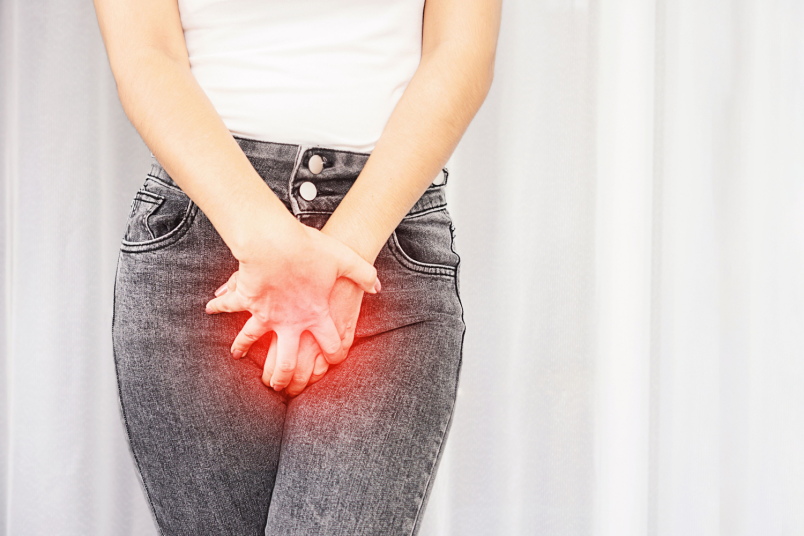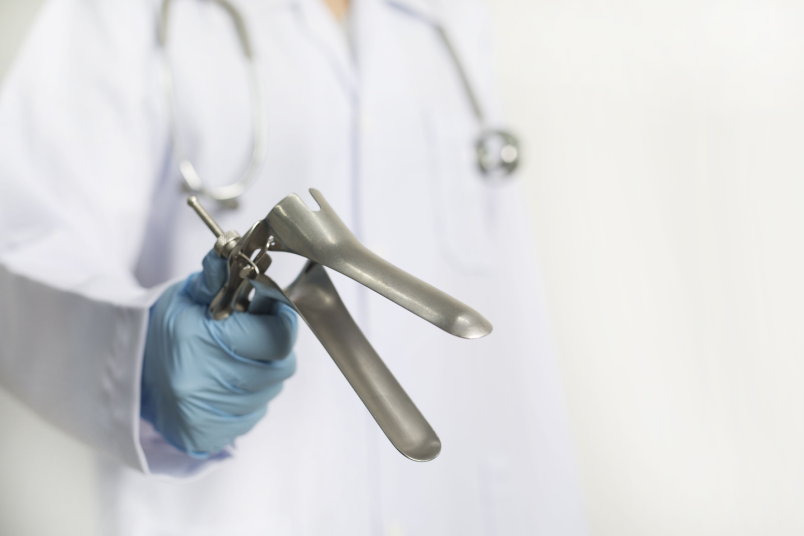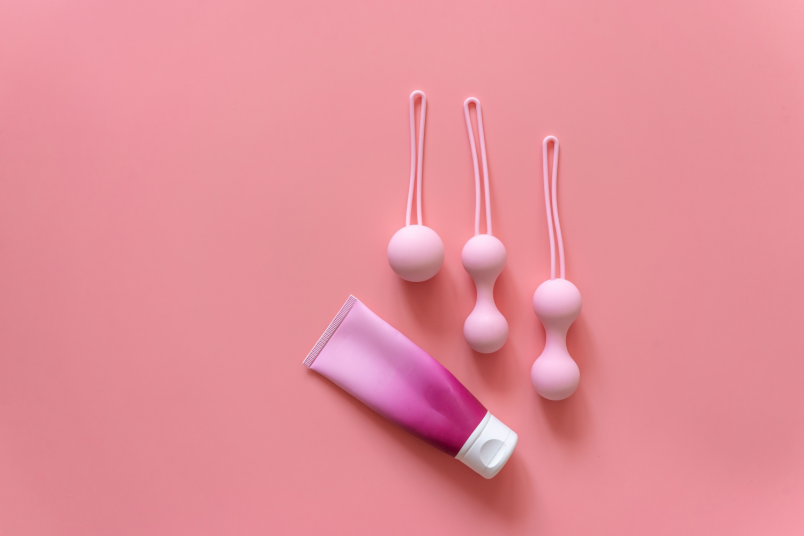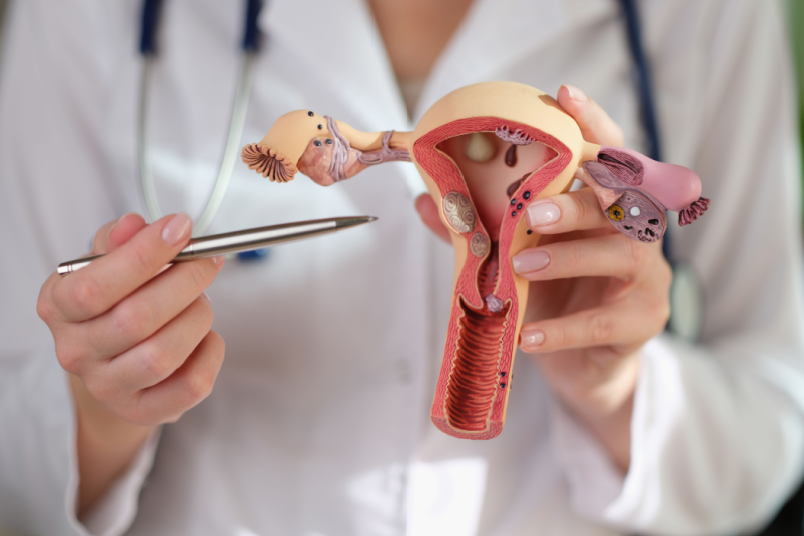Vaginismus refers to a condition when muscles around your vagina get tensed up or contract involuntarily. The vagina is a part of the female reproductive system and connects the lower part of the uterus (cervix) with the outside of your body. These involuntary muscle spasms happen when something like a penis, a finger, a tampon, or a medical instrument tries to penetrate your vagina. These spasms can be mild or very painful.
Vaginismus symptoms may appear during the late teen years or early adulthood, when a woman has sex for the first time. The condition can also happen the first time a woman tries to insert a tampon or has a pelvic exam at a healthcare provider’s office.
Some women develop vaginismus later in life. This can occur after years without any problems. Spasms or discomfort may occur anytime there’s vaginal penetration or they may happen at certain times, such as during sex or pelvic exams.
Vaginismus can lead to infertility and can have a negative impact on a woman’s sense of femininity, her ability to become pregnant, and on the maternal and fetal prognosis during pregnancy.
Causes of vaginismus

Vaginismus is a condition that can lead to physical, psychological, relationship and sexual problems. The underlying cause of this condition is not fully understood. Vaginal pain can be exacerbated by bladder infections, urinary tract infections, and yeast infections.
A variety of factors may cause vaginismus, including:
- Anxiety
- Vaginal tears caused due to childbirth
- Previous surgery
- Fear of intercourse
- Previous sexual abuse / unpleasant sexual experience
Signs and symptoms of vaginismus

Common symptoms of vaginismus include:
- Pain or discomfort during vaginal penetration.
- Inability to have sexual intercourse or pelvic examination due to vaginal muscle contractions or pain.
- Pain during intercourse.
Diagnosis of vaginismus

Your healthcare provider will ask you questions about your symptoms, medical, and sexual history. A pelvic examination can help determine if there are any other issues or the presence of muscle spasms. A topical numbing cream may be applied on the outside of your vagina prior to the pelvic exam to reduce discomfort.
Management and treatment of vaginismus

The primary objective of vaginismus treatment is to reduce the reflex of the muscles that cause them to contract. Additionally, the treatment is designed to address the underlying fears or anxieties that may be contributing to the condition.
Your healthcare provider may suggest one or a combination of the following treatments:
1. Counselling:
Women participate in a limited number of counselling sessions, either alone or with a partner, in which they are provided with information on sexual disorders. Additionally, sessions are conducted in which doctors assist women in overcoming their psychological fear of vaginal penetration in order to better respond to it. Women are provided with comprehensive information on female anatomy, pelvic floor muscles, and sexual intercourse. Furthermore, patients are given insight into vaginismus and the treatment options available for them, based on the nature of the disorder. Husband/ male partner is also involved in the process.
2. Topical therapy:
The use of topical creams may be beneficial in relieving the symptoms of vaginismus.
3. Vaginal dilator therapy:
A vaginal dilator is a tube-shaped device that is available in a range of sizes. The primary purpose of a vaginal dilator is to relax the muscles around the vagina. Patients with vaginismus use a dilator to become more receptive and less sensitive to vaginal penetration. A local numbing cream may be applied to the external surface of the vagina prior to insertion of the vaginal dilator.
4. Kegel exercises:
Kegel exercises involve the contraction and relaxation of the pelvic floor muscles. These exercises are highly beneficial and in addition to the treatment of vaginismus, are also used to treat various other conditions, such as urinary incontinence. To perform this exercise, one must contract the muscles of the pelvic floor and release them repeatedly. Depending on the individual’s health, a doctor may recommend performing these exercises for a certain number of times daily.
5. Botox injections:
The use of Botox injections has been demonstrated to be a highly effective treatment for vaginismus. These injections have been found to reduce the intensity of the most painful spasms and their effects remain long-lasting, even after Botox has worn off.
6. Cognitive behavioural therapy (CBT):
The purpose of cognitive behavioural therapy (CBT) is to help understand how the thought processes influence one’s emotional state and behaviour. This therapy can be used to alleviate symptoms of anxiety, depression, and post-traumatic stress disorder (PTSD).
7. Relaxation techniques:
Relaxation techniques, such as breathing exercises and hypnosis, can also be employed to reduce stress and manage vaginismus.
8. Sex therapy:
Trained sex therapists assist individuals and couples in finding a sense of pleasure in their sexual relations.
If you’ve been diagnosed with or are experiencing symptoms of vaginismus, it is important to know what treatment options are available to help you manage the condition. Getting timely help to treat this condition can help you lead a more fulfilling life.
NU Fertility at NU Hospitals, based in Bangalore, provides modern treatment options for women suffering from https://www.nufertility.com/female-infertility. The doctors at NU Fertility have many years of experience in the field of reproductive health and are trained to handle even the most sensitive cases with expertise and precision. If you’re suffering from vaginismus or have any questions regarding female reproductive health, get in touch with NU fertility specialists.
References:
1. Vaginismus. NHS. https://www.nhs.uk/conditions/vaginismus/. Accessed on 4 October 2023.
2. Vaginismus. MedlinePlus. https://medlineplus.gov/ency/article/001487.htm . Accessed on 4 October 2023.
3. Vaginismus. Cleveland Clinic. https://my.clevelandclinic.org/health/diseases/15723-vaginismus. Accessed on 4 October 2023.
4. Vaginismus. Mount Sinai. https://www.mountsinai.org/health-library/diseases-conditions/vaginismus. Accessed on 4 October 2023.
Author: Dr. Sneha J



